Shanghai to Lhasa Train
- Mark
- Last Updated : 04/23/2025
Starting from Shanghai, travelers with leisure time would like to take a train to Tibet. Shanghai to Lhasa train Z164 departs at 18:33 every evening, passes through 17 cities in mainland China, and takes a full 44 hours and 57 minutes to reach Lhasa. Sitting on the train running on the roof of the world, you can admire the grasslands of northern Tibet, the Jade Pearl Snow Mountain, the Cona Lake, and see the wild donkeys running in the Hoh Xil no man’s land, brisk Tibetan antelope, and large swamp wetlands along the way. As the daytime of this train is the longest, you can fully enjoy the plateau scenery. So Shanghai to Lhasa train ride is also regarded as the most beautiful train route to Tibet. Most of the main attractions along the Shanghai-Lhasa Railway will start from Xining because Xining is the starting point of the Qinghai Tibet Railway.
Content Preview
1. Schedule of Shanghai-Lhasa Train
The Shanghai-Lhasa train No. Z164 departs every day from Shanghai Railway Station at around 18:33 and arrives two days later at Lhasa Railway Station at around 15:30. This train takes around 44 hours and 57 minutes to reach Lhasa. It covers a 4,373-kilometer distance and runs from East to West in China. The broadcast of each carriage uses Chinese, English and Tibetan to introduce the highlights along with the railway.

Shanghai-Lhasa Train (Z164) Timetable
Train No. Z164 makes 16 stops en route to Lhasa. The stops vary in duration from a short 3-minute stop to around a 25-minute stop. Moreover, altitudes gradually vary along the way. Here is a tabular representation of the necessary information about the Shanghai-Lhasa Train Travel.
| Station | Altitude | Arrival | Departure | Stop Time | Days | Distance |
|---|---|---|---|---|---|---|
| Shanghai | 16 m | -- | 18:33 | -- | Day 1 | -- |
| Suzhou | 5 m | 19:21 | 19:24 | 3 min | Day 1 | 84 km |
| Wuxi | 8 m | 19:46 | 19:49 | 3 min | Day 1 | 126 km |
| Nanjing | 5 m | 21:13 | 21:20 | 6 min | Day 1 | 301 km |
| Bengbu | 25 m | 22:52 | 22:59 | 4 min | Day 2 | 485 km |
| Xuzhou | 36 m | 00:18 | 00:28 | 7 min | Day 2 | 649 km |
| Zhengzhou | 108 m | 03:14 | 03:20 | 6 min | Day 2 | 998 km |
| Luoyang | 147 m | 04:47 | 04:52 | 5 min | Day 2 | 136 km |
| Xian | 385 m | 09:19 | 09:27 | 8 min | Day 2 | 1,509 km |
| Xianyang | 479 m | 09:42 | 09:44 | 2 min | Day 2 | 1,532 km |
| Baoji | 1,314 m | 11:00 | 11:08 | 8 min | Day 2 | 1,702 km |
| Lanzhou | 1,520 m | 16:16 | 16:36 | 20 min | Day 2 | 2,185 km |
| Xining | 2,200 m | 19:08 | 19:28 | 20 min | Day 2 | 2,401 km |
| Golmud | 2,780 m | 01:38 | 02:03 | 25 min | Day 3 | 3,231 km |
| Amdo | 4,800 m | 09:59 | 10:01 | 2 min | Day 3 | 3,661 km |
| Nagchu | 4,500 m | 10:42 | 10:44 | 6 min | Day 3 | 4,051 km |
| Lhasa | 3,650 m | 15:30 | -- | -- | Day 3 | 4,373 km |
Shanghai ⇋ Lhasa Train Ticket Info
| Train No. | From - To | Dep. - Arr. | Duration | Frequency | Soft Sleeper Ticket | Hard Sleeper Ticket |
|---|---|---|---|---|---|---|
| Z164 | Shanghai - Lhasa | 18:33 - 15:30+2 | 44:57 | Daily | CNY1262.5/USD194 | CNY793.5/USD122 |
| Z166 | Lhasa - Shanghai | 11:50 - 12:03+2 | 48:13 | Daily | CNY1262.5/USD194 | CNY793.5/USD122 |
Nota Bene:
The above-mentioned schedules and timetables are only provided as a reference for travelers. The schedules are subject to changes depending on the weather conditions and other factors that may affect the train schedules.
2. What Kind of Seat Should I Choose?
There are three types of train tickets from Shanghai to Lhasa, the first type is soft sleeper, the second type is hard sleeper and the third type is hard seat. Since the journey is long, most travelers prefer soft sleepers.
Soft Sleeper
The soft sleeper usually consists of 9 compartments. In the Shanghai-Lhasa train, there are only 2 soft sleeper carriages and around 36 soft sleeper berths. There are also four berths inside a compartment and the compartments come with a door. Each berth comes with a reading light. Moreover, each compartment comes with an overhead luggage rack along with one power socket. So, the soft sleeper berth is larger and provides more comfort than the hard sleeper berth. And the soft sleeper provides better privacy and security by adding a door for each cabin, though, you may find it uncomfortable if you are sleeping with other passengers with whom you are not familiar.
The price of the soft sleeper has doubled the price of the hard sleeper berth. The net price of a soft sleeper is around CNY 1,262.5. Usually, we suggest our clients choose soft sleepers for such a long duration. The soft sleeper would allow you to relax during the trip and enjoy the scenery along the way.
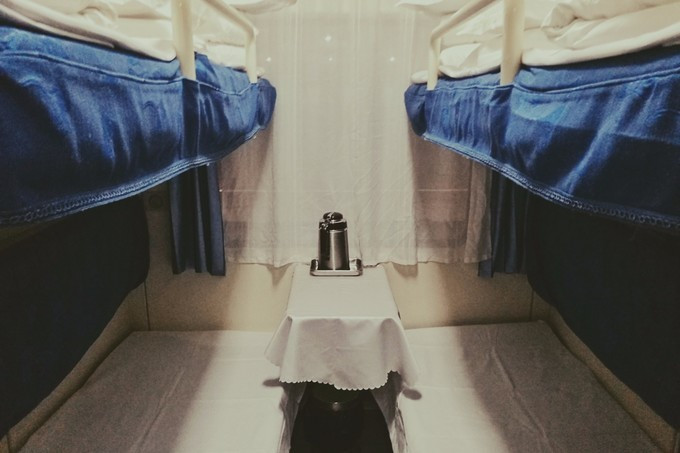
Hard Sleeper
Hard sleepers are available on the ordinary train. It is also available on train no. Z164. The seven carriages of the Shanghai-Lhasa train are equipped with 407 hard sleeper berths. The hard sleeper compartment has no door. It opens straight into the corridor. Thus, you will find the hard sleeper compartment quite noisy, especially during the daytime. The net ticket price of a hard sleeper is CNY 793.5.
There are three bunks in the hard sleeper compartment, namely, the lower bunk, the middle bunk, and the upper bunk. The most convenient for sleeping is the lower bunk, but it comes with a higher price. The middle bunk is pricier than the upper bunk, while the upper bunk is the cheapest among the three hard sleeper berths.
Hard Seater
On every train, there is a hard seater. We would not recommend that you take this option for overnight train travel as it will surely be uncomfortable if you are seated. But if you travel during peak season, you may end up in a hard seat if you don't book your ticket early. The net cost of a hard seater is around CNY 402.5.
If you happen to get a hard seater ticket, you should bring a blanket for overnight travel, as it can be very cold. You should also bring with you a U-shaped soft pillow to cushion your head and neck. You should also bring an eye mask and earplugs for added eye and ear protection.
3. Train Amenities and Facilities
The Shanghai-Lhasa train comes with the necessary facilities and amenities. The train has a dining car, along with moving trolleys that provide food. At the end of each car, there is free hot water for making hot coffee, milk, or tea. Each car comes with power sockets, and the power plugs for chargers are located in the corridors or under your table in the cabin. There's one western-style toilet and one squat-style toilet in the soft-sleeper carriage; only squat-style toilets are available in the hard-sleeper carriage.
What's more, in order to prevent passengers from experiencing altitude sickness, when the train reaches Golmud, the oxygen supply system will be turned on. You can find oxygen outlets at the head of each sleeper bed and corridor in each carriage.
4. How to Have Hassle-Free Train Travel?
Proper planning and coordination can help you avoid any hassle or problem with your train tour. If you are coming from other countries like Australia or the US, you will find yourself upon arrival in Shanghai at the Shanghai Pudong International Airport. Or if you just need to depart from downtown to the train station running the Tibet train. Here are some tips on how to get to the Shanghai Railway Station.
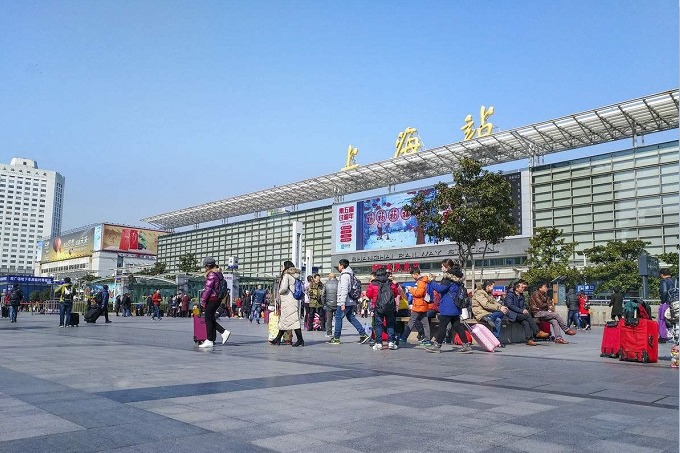
Four Railway Stations in Shanghai
Shanghai has four railway stations, namely, Shanghai South, Shanghai West, Shanghai Hongqiao, Shanghai Railway Station. You should go to the Shanghai Railway Station because it is the only station that operates the train going to Lhasa. The address of the Shanghai Railway Station is No.330 Moling Road, Jing'an District of Shanghai (上海市静安区秣陵路303号).
1. From Downtown to Shanghai Railway Station
You can ride a taxi or go via the metro Line 1, Line 3, and Line 4.
2. From Pudong International Airport to Shanghai Railway Station
The major air travel hub in Shanghai is the Pudong International Airport. From the Pudong International Airport, you can either ride a taxi, bus, shuttle, train or via subway.
Better be Ahead of Time
As mentioned earlier, you should book your ticket early so that you can get your preferred accommodation. During your travel date, make sure that you are already at the train station at least 60 minutes before the departure of the train. Make sure also that you are boarding the right train.
Secure Your Tibet Travel Permit
Before you board train Z164, your Tibet Travel Permit will be checked. The Tibet Travel Permit can only be applied through a registered Tibet Travel Agency on behalf of the individual traveler. If you travel with us, we will ensure that you have this permit before boarding the train.
5. How to Shorten Train Travel?
The easiest and time-saving way to travel from Shanghai to Lhasa is to take a plane from Shanghai to Xining (the starting point of the Qinghai-Tibet Railway), and then take a train from Xining to Tibet. There are several daily trains to Lhasa in Xining, and the capacity greatly exceeds that of Shanghai to Lhasa. It is much easier to get a train ticket.
Since most of the scenery appears in the last section of the Qinghai-Tibet railway line - Golmud to Lhasa, and staying 44 hours on the train is quite a long time, if you have enough budget, we recommend that you fly from Shanghai to Xining, and then take a Xining Lhasa train, so you can save much time and energy.
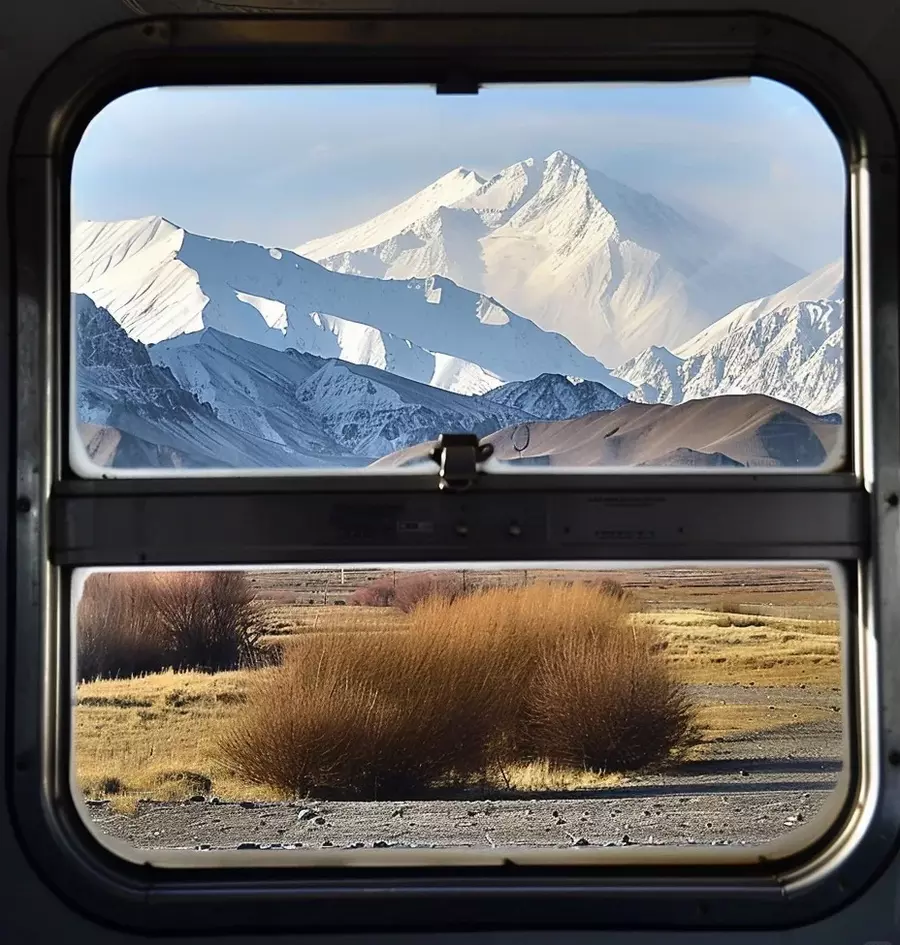
6. Onboard Train No. Z164
Once you board the train and find your berth, you may observe the surroundings. There's a small table next to the lower berth, where you can put some food on it. Under the lower berth, you can put some smaller luggage or items. If your luggage is big, you can put it on the "vacant shelf" opposite the berth. For important items, you can put them on your bed or on the hook of the bed.
Then the train staff will exchange a plastic "bunk card" for your ticket right after the train departs from Shanghai. One hour prior to your arrival at Lhasa, the train staff will again give you back your ticket in exchange for the bunk card. The staff will also remind you to get off at the right station.
Take care of your ticket because you will need to present it when you get off the train. Additionally, you should keep your passport, wallet, permits, and other valuables safe. You should also keep your valuables and important things close to you.
During your train travel, you can buy food peddled around on trolleys. You can also eat in the train’s dining car. You can buy three meals plus drinks at the dining carriage. The dining carriage is usually situated in the middle of the train. We would also advise you to bring some snacks and fruit because the kind of food offered on the trolleys is expensive.
7. How to Cope with Altitude Changes?
The train route from Shanghai to Lhasa is far better than a direct flight from Shanghai to Lhasa when it comes to acclimatizing your body. As we mentioned in the abovementioned tabular graph, the altitude of Shanghai is around 16 meters while Lhasa is 3,650. If you choose a direct flight from Shanghai to Lhasa, you are more likely to suffer from altitude sickness due to abrupt changes in altitude.
What is Altitude Sickness?
Altitude sickness is a variety of discomforts caused by rapidly entering the plateau above 3,000 meters and being exposed to low pressure and low oxygen. It is a common disease unique to plateau areas. It's characterized by fatigue, dizziness, headache, and nausea. It can sap your energy and prevent you from enjoying your stay in Lhasa. As such, it is a major concern for those who travel to Lhasa.
The Shanghai-Lhasa train travel allows you more time to gradually adapt your body to the changing altitudes along the way. The gradual ascent to Lhasa from Shanghai could prevent you from suffering acute altitude sickness. Train Z164, for example, would make a stop at Xining for twenty minutes. It is more than halfway along the way and has an altitude of 2,200 meters above sea level. You can use these quick stops to acclimate your body gradually to high altitudes.
Z164 is Designed for High Altitude
If you are still worried about altitude sickness, you should not worry much, for train Z164 is specifically designed for high-altitude travel. It has pressurized cabins and is tightly sealed. Besides, it is equipped with two oxygen supply sets, namely, the dispersion-mode oxygen supply and the distribution-mode oxygen supply.
As the train ascends to Golmud (2,780 meters above sea level), the distribution-mode oxygen supply automatically pumps more oxygen into the train to assuage the impact of the high altitude and thinner atmosphere. Lastly, the windows of the train are lined with protection from ultraviolet rays.
8. Highlights
The Shanghai-Lhasa train route is replete with beautiful and awe-inspiring sceneries that you would only see along this route. The railway traverses central China and moves up to the Tibetan Plateau. The highlights of this train travel are mostly situated along the Xining-Lhasa section of the railway line. Among the most anticipated highlights in this railway section are the following:
- Jinyintan Prairie
- Qinghai Lake
- Qarhand Salt Lake
- Kunlun Mountains
- Hoh Xil
- Tanggula Mountains
- Nagqu
- Cona Lake
- Nyainqentanglha Mountains
- Yangpachen
- Dagze County
- Lhasa

You can check out more details about the above-mentioned scenic highlights along this train journey.
9. Conclusion
The Shanghai-Lhasa Train Travel takes you from the easternmost shores of China to the far west part of the country. This scenic route allows travelers to fully immerse themselves in the stunning landscapes, reducing the risk of altitude sickness and providing a more comfortable acclimatization process than a direct fight. Although it is a long train journey, nevertheless, it is one of the best train routes that you can ever take.
Recommended Tour Packages
Email response within 0.5~24 hours.



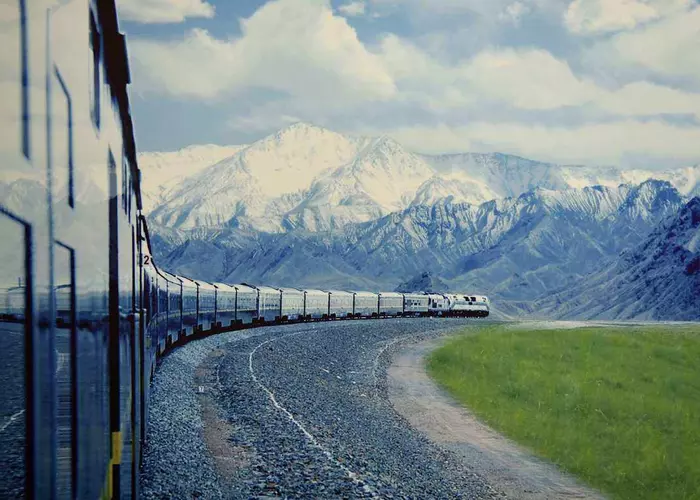



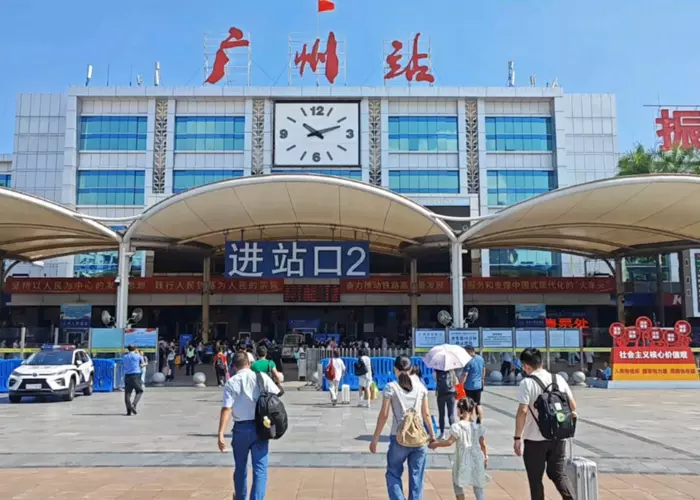
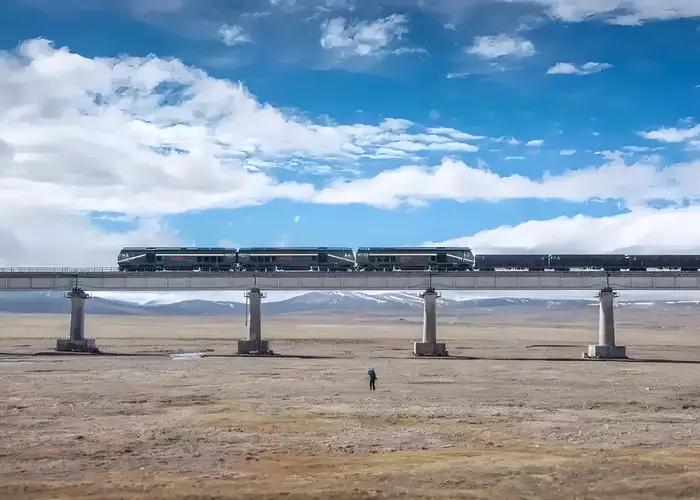
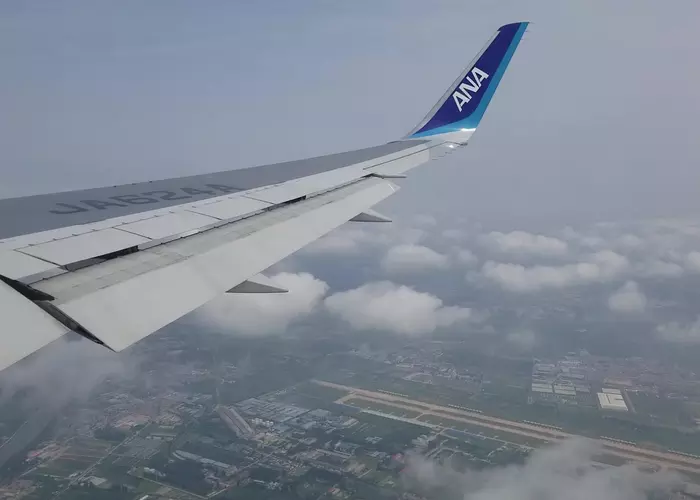

Typically Asked Questions from Our Clients
Asked by Ange***
Ideally, Shanghai to Lhasa direct (without having to change trains in Xining). Date of travel is within May, but very flexible.
Dear Ange****,
We can help you book train tickets from Shanghai to Lhasa, and try to book the direct tickets.
To board the train, you need a Tibet permit. We can help you apply for a Tibet permit if you book a Tibet tour with us. May I know how long you will stay in Tibet? I can recommend some tours to you.
Asked by Rado***
Hello, I want ask: it's possible buy ticket: Shanghai - Lhasa - Beijing und how much ist a price for this ticket?
Dear Rado***,
We can help you book the train tickets from Shanghai to Lhasa & Lhasa to Beijing if you book the tour with us. To board the train to Lhasa, you need a Tibet Permit, which we can help you apply for.
Asked by Juli***
Hello, I am traveling with my friend in Lhasa from the 4th-8th with tibet highland tours. We need to book a train to Shanghai on the 8th so we can catch our flight from SHA on sept 10th at 8:30PM. Please let me know how to proceed with booking, thanks.
Dear Julia***,
We can help you book the Lhasa to Shanghai train tickets. Due to Tibet's unique background, apart from a passport and a Chinese visa, all foreign tourists allowed to enter Tibet must have Tibet Travel Permits by booking a Tibet tour. And the permit can only be applied by a local Tibet travel agency. We can obtain the Tibet travel permit for you if you book the Tibet tour with us.
Asked by chin***
Tibet Train Tickets Online Booking
Dear Chin***,
We can help you book the connecting soft-sleeper train tickets from Shanghai to Lhasa via Xining if you book the tour with us. The direct soft-sleeper train ticket from Shanghai to Lhasa is very difficult to book. You need a Tibet Permit to board the train. We can help you apply for it after you book the tour with us.
Asked by Jia ***
Hello!
We are tentatively looking to travel to Lhasa through train in October, with the dates unconfirmed. Are the tickets already available and what would the price be like?
Dear Jia****,
We can arrange a Shanghai Lhasa train ticket for you in October if you book a tour with us. In general, train tickets are sold 15 days in advance.
Read More ...